Green caterpillars are a common sight in gardens and natural areas, and they come in many different shapes and sizes. Identifying these caterpillars can be a fun and educational activity for both children and adults. There are many types of green caterpillars, each with unique markings, spines, and plant food preferences.
In this guide, we will explore 10 types of green caterpillars with pictures and identification. Knowing how to identify these caterpillars can help you understand their role in the ecosystem and protect your plants from damage caused by some species.
You are reading: 10 Types Of Green Caterpillars With Pictures And Identification
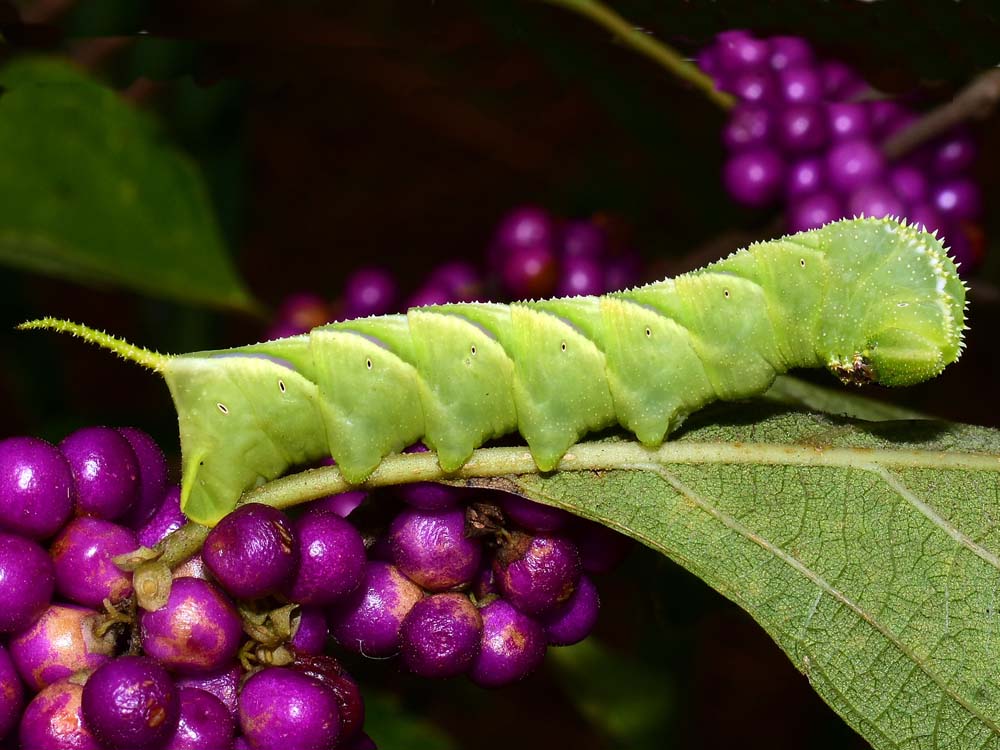
10 Types Of Green Caterpillars With Pictures And Identification
Black Swallowtail Caterpillar
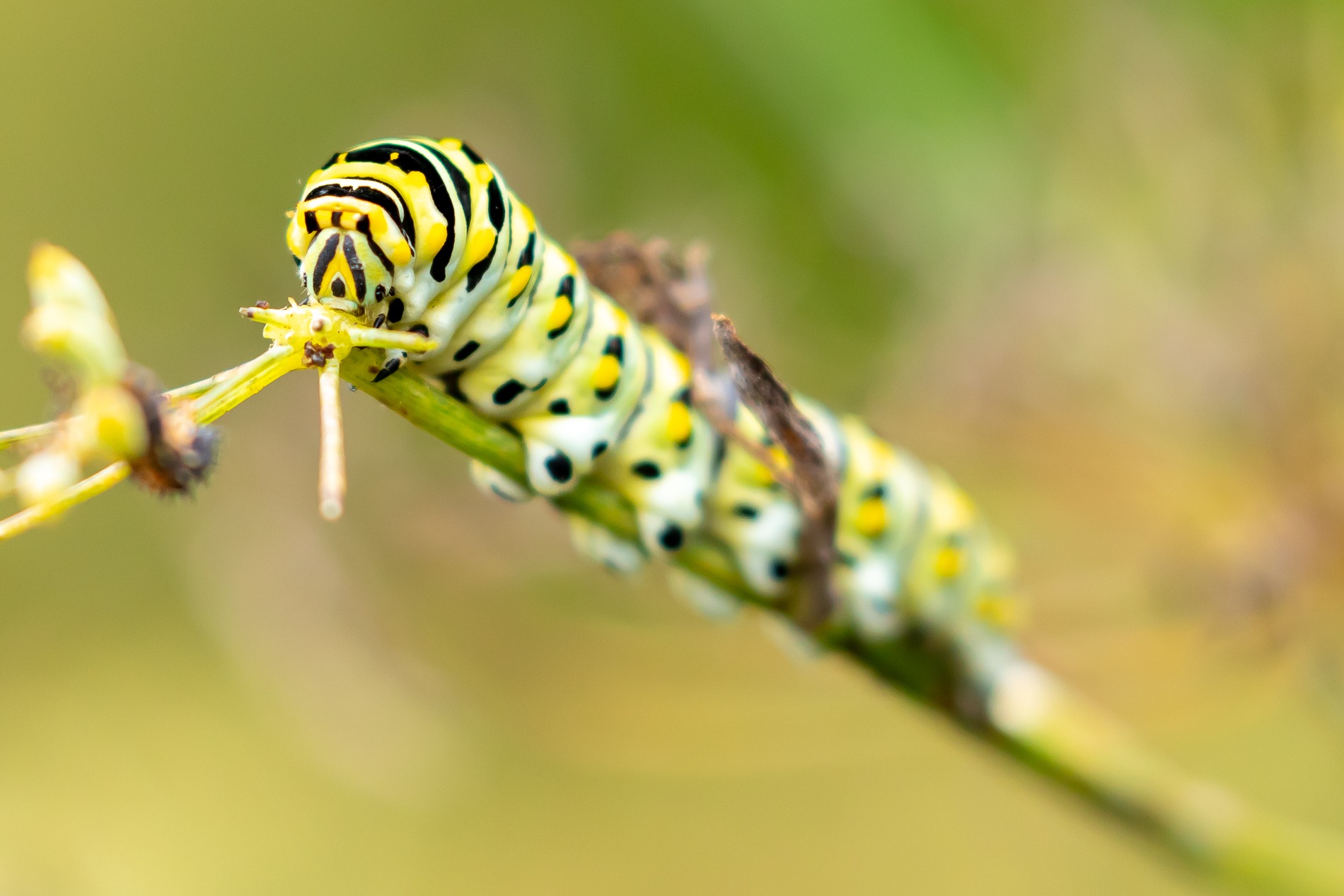
The Black Swallowtail Caterpillar is a common sight in gardens and natural areas throughout much of North America. The caterpillar of the Black Swallowtail butterfly, Papilio polyxenes, is known for its unique markings and spiny-looking back.
Young caterpillars resemble bird droppings, while older larvae are bright green with black and yellow stripes. The caterpillar feeds on a variety of plants, including parsley, dill, fennel, and carrot.
The Black Swallowtail butterfly is often confused with other dark-colored Swallowtail species, such as the Pipevine Swallowtail and Spicebush Swallowtail. The adult butterfly has black wings with yellow, blue, orange, and red markings.
Cecropia Moth Caterpillar
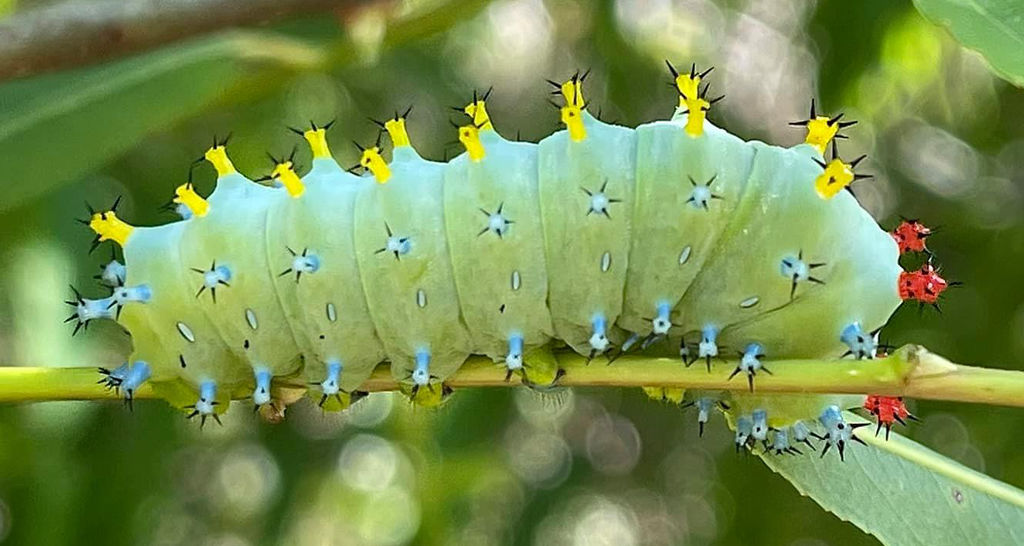
The Cecropia Moth Caterpillar is the larval stage of the Cecropia Moth, which is North America’s largest native moth. The caterpillar is bright green or sea green with prominent dorsal protuberances and can reach up to 4.5 inches in length.
The Cecropia Moth Caterpillar feeds on the leaves of many trees and shrubs, including ash, birch, elm, maple, and wild cherry. The caterpillar continues to grow and change color from black to yellow to green as it goes through successive molts.
In late summer, the caterpillar seals itself into a cocoon and emerges in the spring as a moth. The adult moth has reddish bodies and black to brown wings surrounded by bands of white, red, and tan, with a wingspan of five to seven inches.
The Cecropia Moth is found in hardwood forests east of the Rocky Mountains in the United States and Canada.
Spicebush Swallowtail Caterpillar
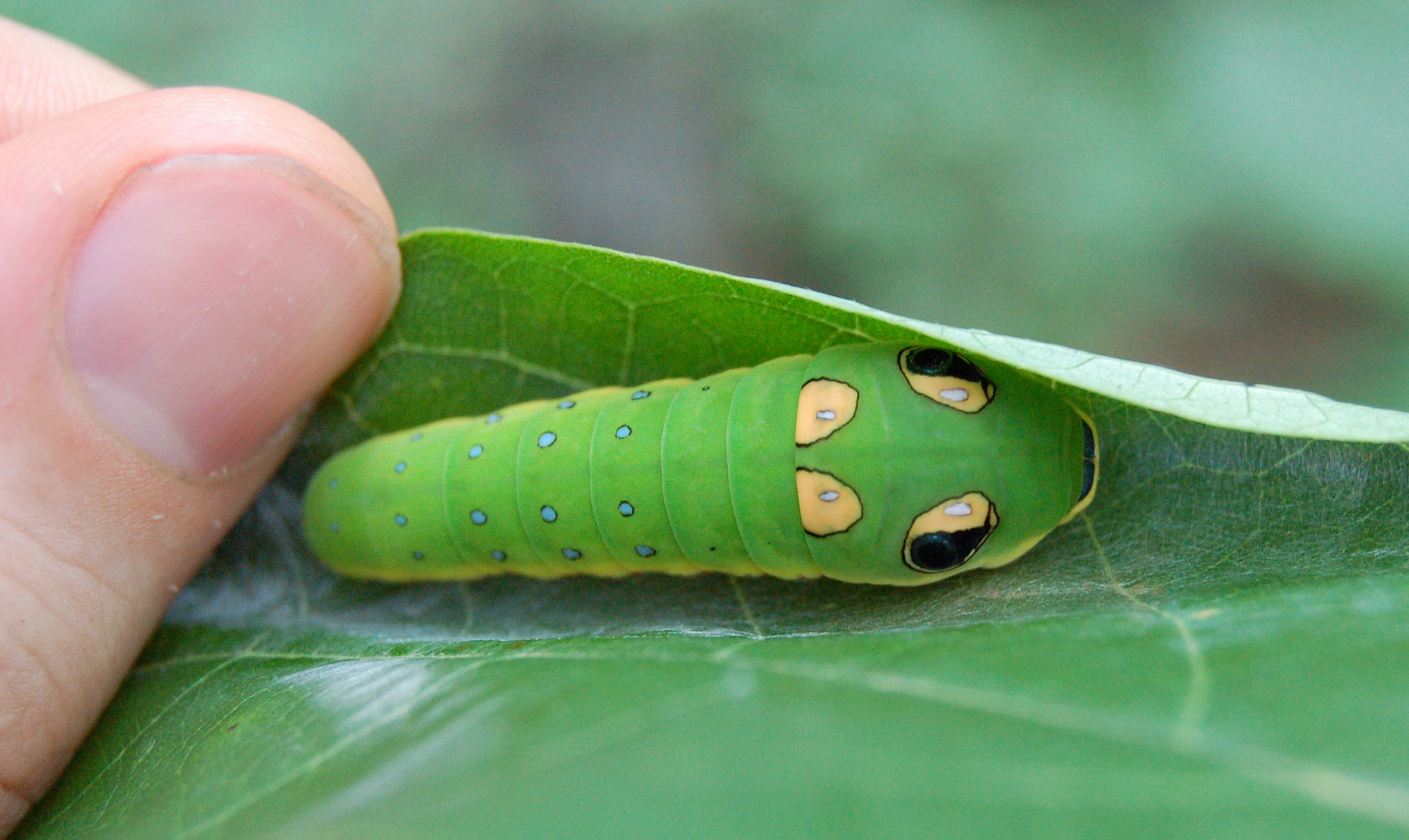
The Spicebush Swallowtail Caterpillar is the larval stage of the Spicebush Swallowtail butterfly, Papilio troilus. The caterpillar is bright green with a pair of black and yellow eyespots on a hump behind the actual head, and two more eyespots on the thorax.
The eyespots and swollen thorax create the illusion that the caterpillar is a common green snake, which helps to ward off predators, specifically birds.
The caterpillar feeds on the leaves of several plants, including spicebush, sassafras, and red bay. The Spicebush Swallowtail butterfly is relatively common in natural areas and flower gardens throughout the eastern and parts of the mid-western United States.
The adult butterfly is generally black, with broad, black hind wings bordered with pale, greenish spots. To maximize butterfly populations in yards, both caterpillar hosts and nectar plants for adults should be planted.
Angle Shades Moth Caterpillar
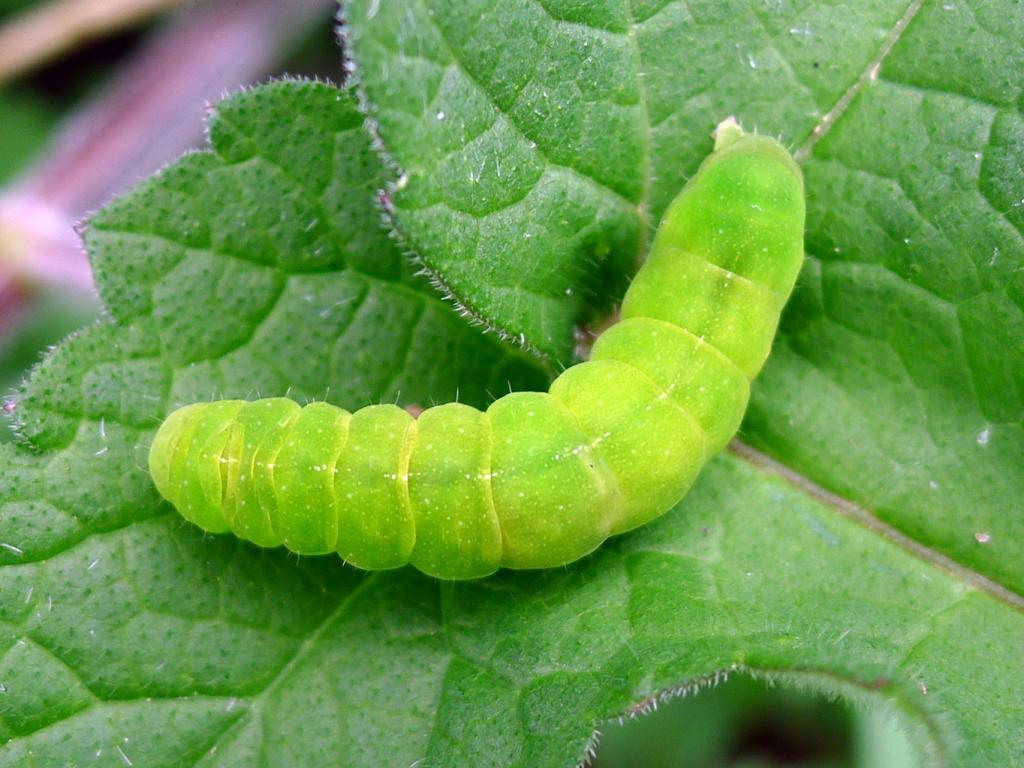
Read more : 10 Types Of Pond Turtles
The Angle Shades Moth Caterpillar is the larval stage of the Angle Shades Moth, Phlogophora meticulosa. The caterpillar is dull green or pinkish-brown, thickly dotted with pale, with a whitish dorsal line and narrowly whitish lateral lines.
The larva is green or brown with reddish spots along the sides and faint dark chevrons along the back. The caterpillar feeds on a wide variety of plants, including alders, asters, ferns, huckleberries, sunflowers, trilliums, and willows.
The Angle Shades Moth is distributed throughout Europe as far east as the Urals and also in the Azores, in Algeria, and in Asia Minor, Armenia, and Syria. The adult moth is large and has pinkish-brown markings on its wings, which are folded along the body at rest, giving the impression of a withered leaf.
Although considered a pest in gardens due to the wide range of caterpillar feeding plants, the adults are large, handsome moths with unusual markings.
Cabbage Looper Caterpillar
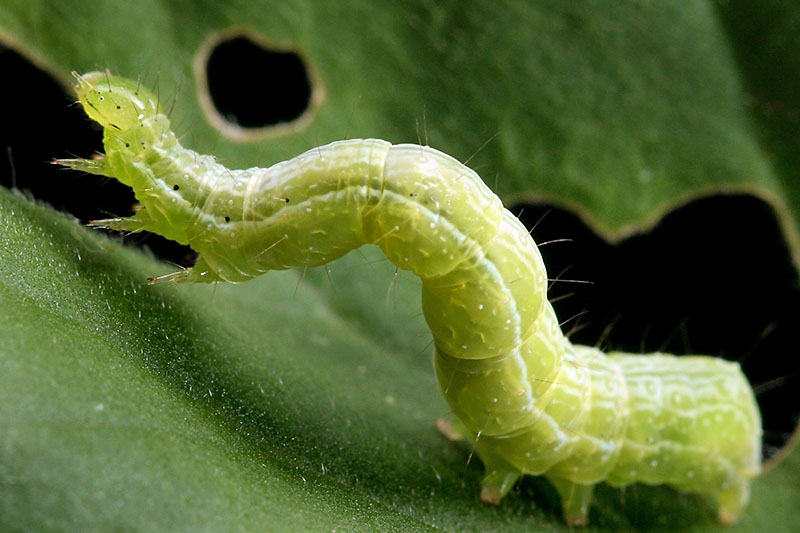
The Cabbage Looper Caterpillar is the larval stage of the Cabbage Looper Moth, Trichoplusia ni, which is a medium-sized moth in the family Noctuidae. The caterpillar is smooth, green, and about 1.5 inches long, with a narrow white stripe along each side and several narrow lines down the back.
The caterpillar is called a looper because it arches its back into a loop when it crawls. The Cabbage Looper Caterpillar feeds on the leaves of cruciferous vegetables, such as cabbage, broccoli, and bok choy. The caterpillar is a generalist insect that can reside and feed on over 160 different plant species.
The Cabbage Looper Moth is found throughout North America and is a serious pest of cruciferous plants. The adult moth has mottled gray-brown forewings with silvery white spots centrally, and the hind wings are light brown at the base, with the distal portions dark brown.
Cabbage White Caterpillar (Imported Cabbageworm)
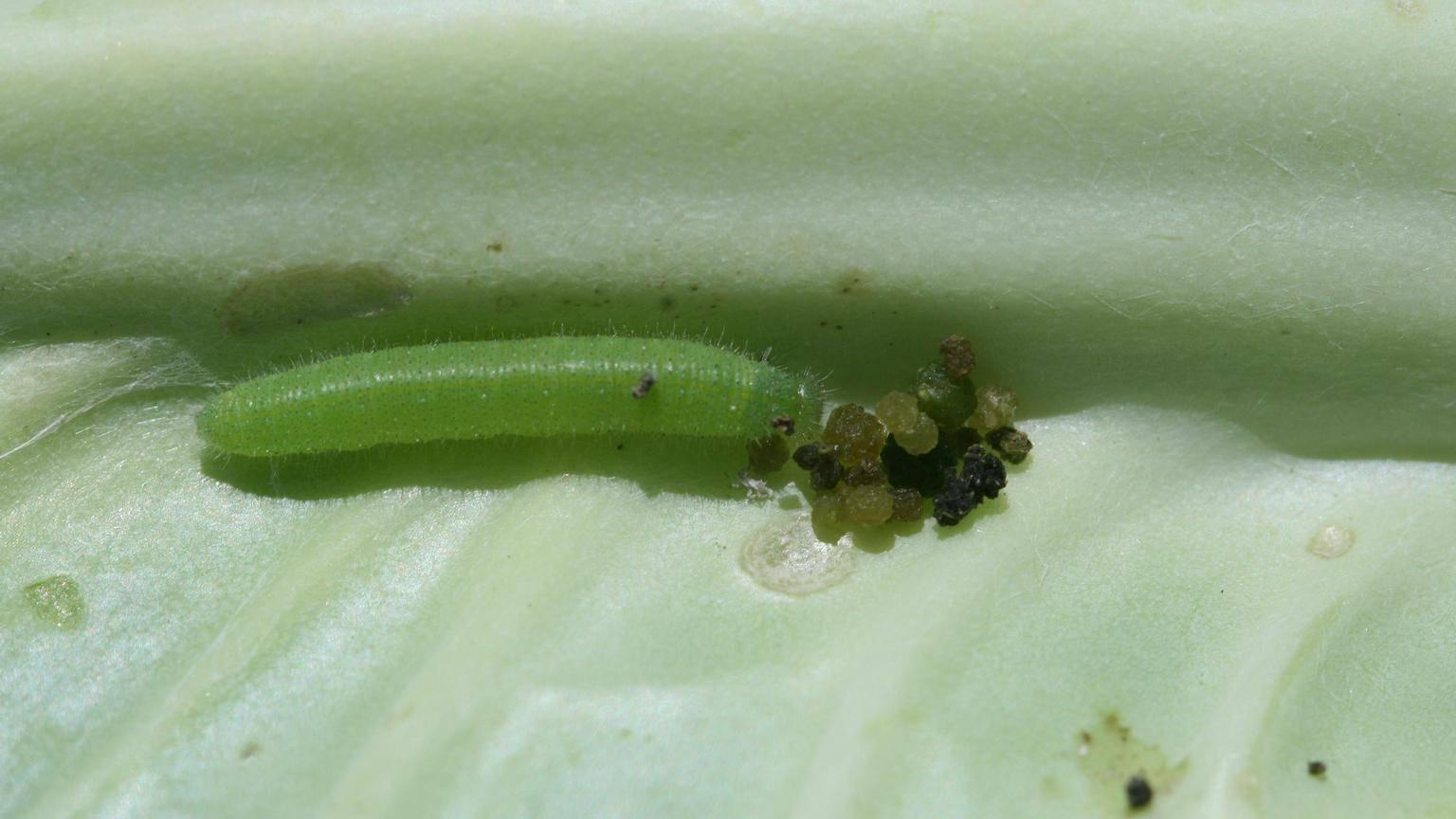
The Cabbage White Caterpillar, also known as the Imported Cabbageworm, is the larval stage of the Cabbage White Butterfly, Pieris rapae. The caterpillar is gray-green, slightly fuzzy, and sluggish, with a yellow stripe down its back and a yellow stripe on each side.
The caterpillar feeds on the leaves of cruciferous vegetables, such as cabbage, broccoli, and bok choy. The Cabbage White Butterfly is found throughout North America, Europe, and Asia, and is a serious pest of cruciferous plants. The adult butterfly is white to pale yellowish with a wingspan of 1.5 inches and has one to four black spots on each forewing.
The caterpillars rest on the undersides of the leaves, making them less visible to predators. To control the Cabbage White Caterpillar, cultural practices such as paper caps early in the season and row covers later can be effective.
Cloudless Sulphur Caterpillar
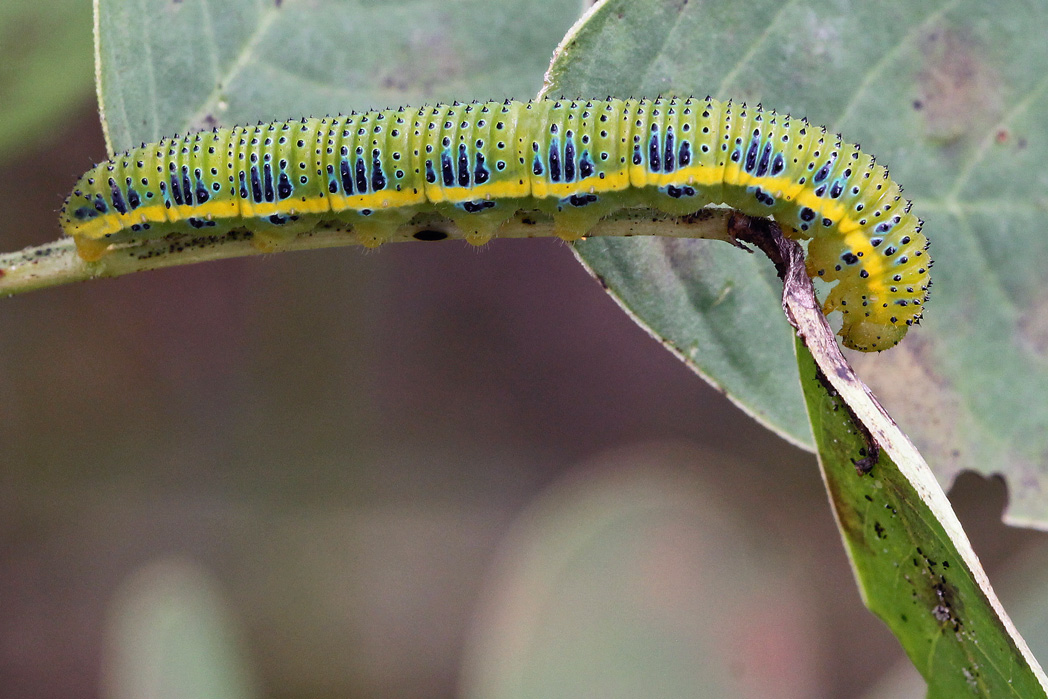
The Cloudless Sulphur Caterpillar is the larval stage of the Cloudless Sulphur Butterfly, Phoebis sennae. The caterpillar is bright green with blue and/or yellow stripes down the side. The caterpillar feeds on the leaves of various plants, including senna, partridge pea, and wild sensitive plant.
The caterpillars are often considered elusive pests because they turn green when eating green leaves and turn yellow when eating yellow flowers. The Cloudless Sulphur Butterfly is one of the most common and conspicuous butterfly species in the Americas, and is particularly prominent during its fall migration.
The adult butterfly is bright yellow, although summer females may be pale yellow or white, and has a wingspan of 2.5 to 3.5 inches. To attract Cloudless Sulphur Butterflies to your garden, plant nectar-rich flowers such as lantana, butterfly bush, and zinnia.
Copper Underwing Caterpillar
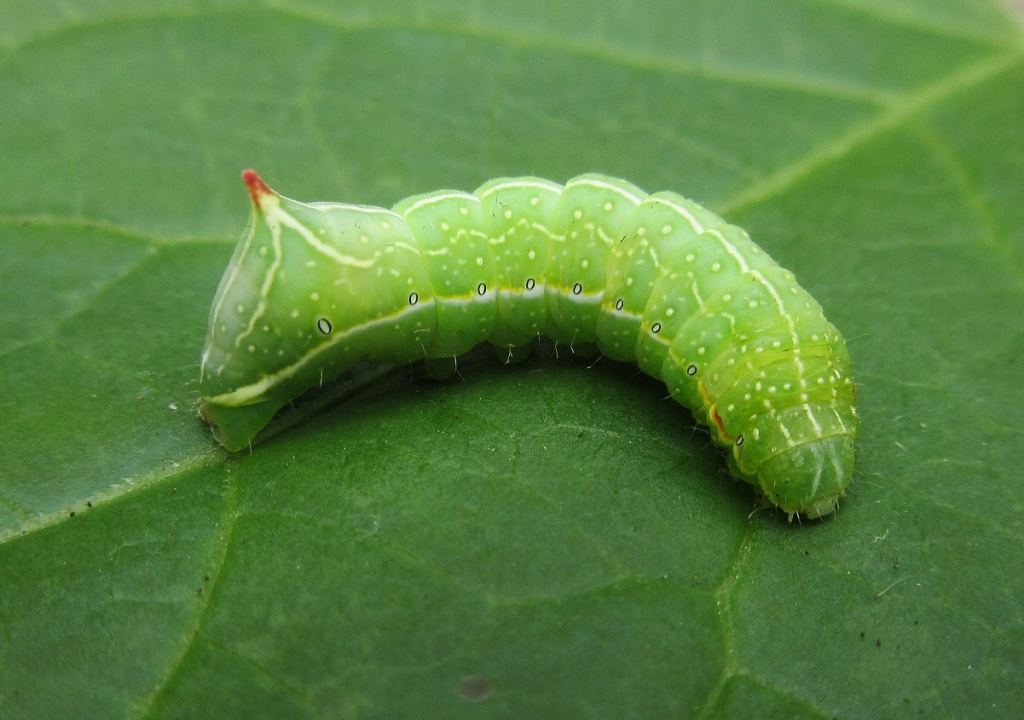
The Copper Underwing Caterpillar is the larval stage of the Copper Underwing Moth, Amphipyra pyramidea. The caterpillar is striking blue-green with cream and yellow spots and stripes, and a conspicuous hump on the eighth abdominal segment.
Read more : Top 10 Animals That Have Shells
The caterpillar feeds on the leaves of various trees, including oak, birch, and maple. The Copper Underwing Moth is found across the Palaearctic region, including Europe, North Africa, the Near East, Iran, southern Siberia, northern India, Korea, and Japan.
The adult moth has a wingspan of 47-54 mm, with brown forewings marked with paler fascia and a pale, dark-centered stigma, and bright copper hindwings, hence the common name of “copper underwing”.
The Copper Underwing Moth is very similar to Svensson’s Copper Underwing, but identification is usually fairly straightforward by looking at some markings on the forewings. The Copper Underwing Moth is not considered a significant pest in North America, but it can be a pest in Europe.
Cross-Striped Cabbageworm
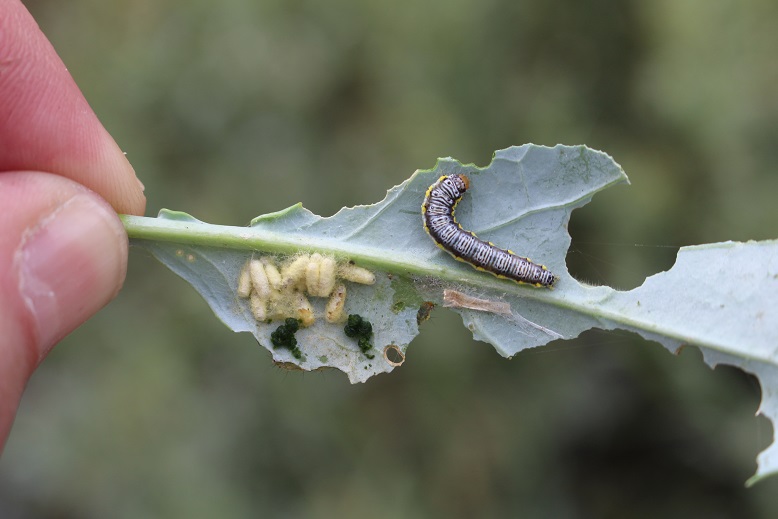
The Cross-Striped Cabbageworm, also known as Evergestis rimosalis, is a species of moth in the family Crambidae. The caterpillar of the Cross-Striped Cabbageworm is a common pest of cruciferous vegetables, such as cabbage, broccoli, and cauliflower.
The caterpillar produces small holes in leaves until only veins remain or the entire leaf is consumed. The Cross-Striped Cabbageworm has 2 to 3 generations per year and is most abundant on late-season plantings.
The adult moth is plain-looking, with light brownish-grey forewings with dark grey patches and white hindwings with dark grey apical shading and a dark discal spot. The wingspan is about 25 mm. The larvae feed on various Brassicaceae species, including cabbage, collard greens, and Brussels sprouts.
The eggs are a medium-yellow mass laid on the underside of Brassica leaves. To control the Cross-Striped Cabbageworm, cultural practices such as crop rotation, sanitation, and timely planting can be effective.
Rustic Sphinx Moth Caterpillar (Hornworm)
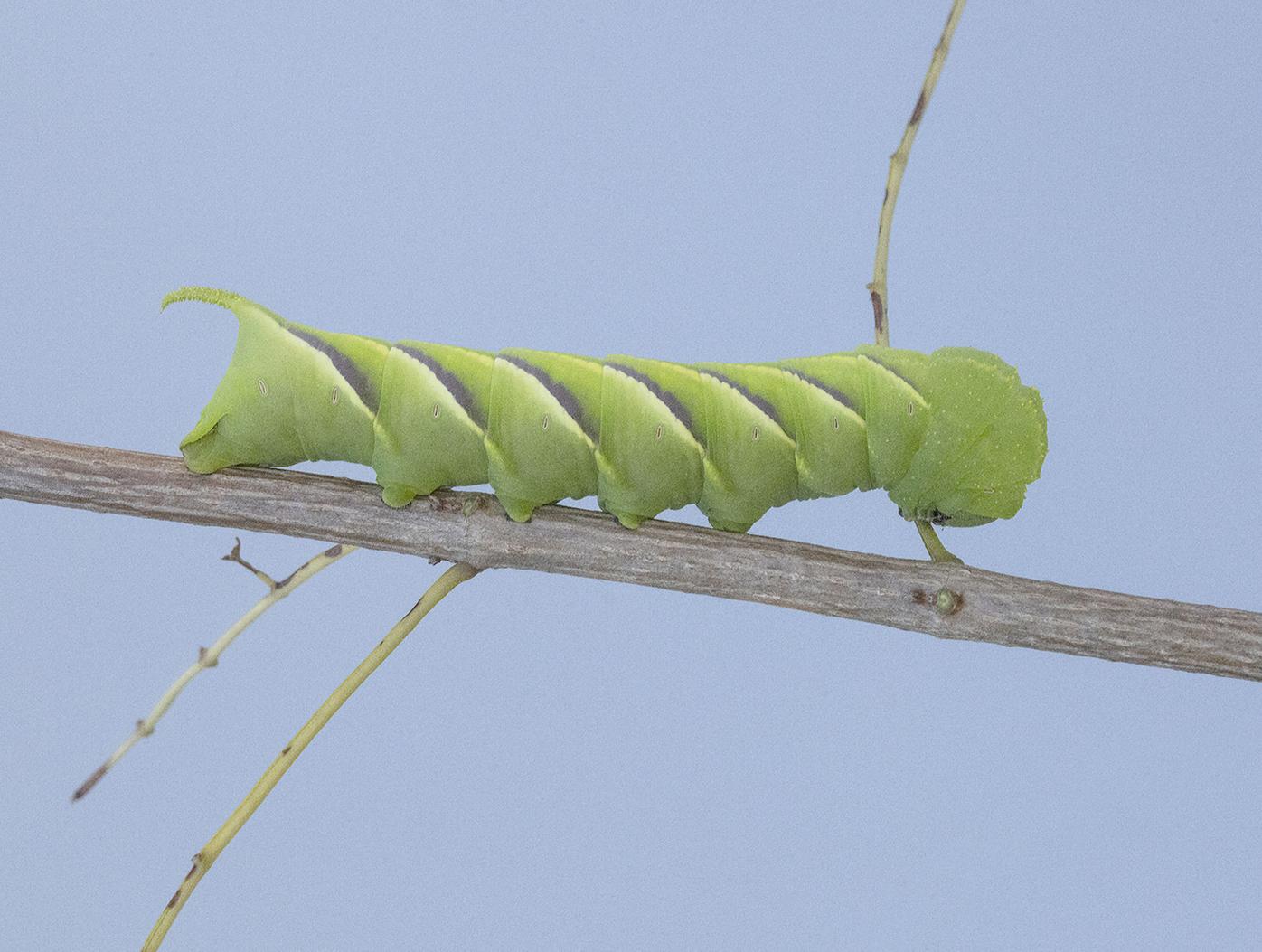
The Rustic Sphinx Moth Caterpillar, also known as the Rustic Hornworm, is the larval stage of the Rustic Sphinx Moth, Manduca rustica.
The caterpillar is large, reaching up to 3.5 inches in length, and is green with diagonal white stripes and a black horn on the rear end. The Rustic Sphinx Moth Caterpillar feeds on the leaves of various plants, including jasmine, bignonia, and petunia.
The Rustic Sphinx Moth is found in the southern parts of the United States, southward through Mexico, Central America, and South America to Uruguay. The adult moth has a wingspan of 3 to 4 inches and is brown with a white spot on each forewing and a pinkish-brown abdomen.
The Rustic Sphinx Moth Caterpillar is often confused with the closely related Tobacco Hornworm Caterpillar, Manduca sexta, which has a red horn and diagonal white stripes. The Rustic Sphinx Moth Caterpillar is not considered a significant pest in North America.
FAQS
1. What are green caterpillars?
Green caterpillars are the larval stage of moths and butterflies. They are often green or have green markings and feed on the leaves of various plants.
2. How can I identify green caterpillars?
You can identify green caterpillars by their size, specific markings, spines or spikes, and plant food they feed on. There are many types of green caterpillars, each with unique colors, patterns, and textures.
3. Are green caterpillars harmful?
Most species of green caterpillars are completely harmless. However, some have spikes or spines that can give you a nasty sting, and one species even spits acid. It is always better to identify the caterpillar species before picking one up.
4. What plants do green caterpillars feed on?
Green caterpillars feed on the leaves of various plants, including cruciferous vegetables, such as cabbage, broccoli, and cauliflower, as well as trees and shrubs, such as oak, birch, and maple.
5. How can I control green caterpillars in my garden?
Cultural practices such as crop rotation, sanitation, and timely planting can be effective in controlling green caterpillars. You can also use products such as Bonide Caterpillar Thuricide Spray or Monterey Bacillus Thuringiensis to control caterpillars.
Source: https://petstutorial.com
Category: Animals










